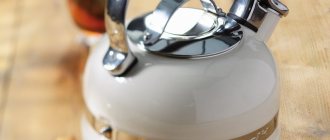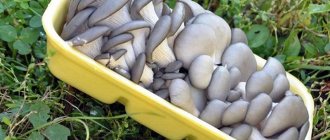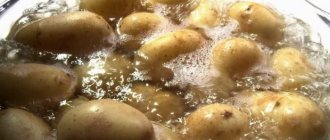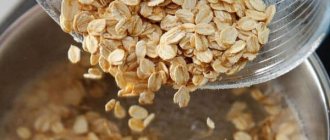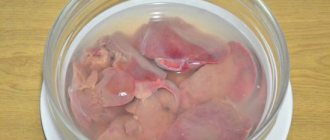When carefully choosing a new kettle, we count on its long service life. We carefully read the instructions, listen to the recommendations of consultants and after a short time we happily forget about the rules of use and care.
The “life” of a kettle depends on proper operation, where any nuances are important. And before inviting family and friends for tea, you need to prepare the device for use.
How to remove grease from an electric kettle?
Boiling in soda solution:
- Take warm water into a bucket or basin, dissolve soda in it, 1 tablespoon per liter of water;
- put the container to heat, lower a kettle or other utensils into it;
- after 30 minutes of boiling, turn off and leave until completely cooled;
- Remains of dirt are removed with a sponge;
Interesting materials:
How to remove an unnecessary browser from your computer? How to delete unnecessary chat on WhatsApp? How to delete unread messages in Viber? How to delete multiple files at once? How to delete multiple cells? How to delete Undeletable files? How to delete undeletable files and folders? How to remove undeletable Windows files? How to remove uninstallable Huawei apps? How to remove uninstallable programs on Android?
Preparing the teapots for work
Fans of the tonic drink use special small teapots. New teapots must be prepared for use before “starting”:
- Dishes made of glass, porcelain, stainless steel are washed with water with the addition of a mild detergent, rinsed and thoroughly wiped with a towel;
- First, the clay teapot is washed with warm water (4-5 times). Then they put it in a large bowl, slowly fill it with hot (70-80 degrees) water and pour it over the outside. Leave for a short time and empty. They fill it with water three more times - first they scald it, then pour it over with warm water (50 degrees) and fill it again with boiling water. The empty kettle is allowed to dry.
Such procedures for pottery are mandatory, since this relieves possible internal stress in the container and hardening occurs.
Is it possible to cook in enamel dishes?
Contrary to popular belief, enamel cookware is not suitable for all products. For example, you cannot cook milk and dairy products - porridge, soups - in it. ... Remember that the weak point of enamel cookware is its coating. The enamel can chip off if it is heated too intensely or if it is dropped from a height.
Interesting materials:
How long does it take to get a visa to France 2022? How long does it take to obtain a foreign passport with temporary registration? How long did it take to make Red Dead Redemption 2? How much cardio should you do to lose weight? How long does it take to do a plank? How many planks should you do per day? How many sets of strength should you do? How many sets of barbell squats should you do? How many repetitions should you do to grow muscles? How many reps should you do on the bench press?
Where does the unpleasant “aroma” come from and what does it mean?
To understand whether using a “flavored” teapot is dangerous in each specific case, you need to delve into the problem a little deeper. Let's look at the most common causes of unpleasant odor, namely:
Not ventilated. The first and safest reason for the appearance of odor is the tight factory packaging. The smell of plastic simply does not have time to dissipate from the new product and ends up in your home along with your purchase. Of course, at the factory no one will ventilate the kettles in the fresh air, but you can do this at home with ease. If the smell is gone, the product is of high quality. Low quality materials. An unpleasant-smelling kettle may be made of low quality plastic. It is clear that products made from high-quality material are more expensive, but health is priceless. Some unscrupulous manufacturers are trying to save on materials at the expense of consumer health. The food-grade plastic from which such products should be made has no odor, but is also more expensive. In addition, the kettle is constantly exposed to high temperature loads, and in order to extend its service life, many plasticizers and dyes are added to the plastic composition. Without the latter, the appearance will leave much to be desired. If these impurities are of low quality, odor is also inevitable. The most unpleasant thing in this story is that this cocktail, when heated, safely dissolves in water, making it a slow poison for any human body. It's time to change. It happens that the kettle served you faithfully for some time, giving you no reason to doubt its safety
And it doesn’t matter - a week or five years - such symptoms can appear at any time. There was no smell and then suddenly it appeared one fine morning, ruining the user’s mood and appetite. This phenomenon indicates that the plastic of the kettle has already served its purpose and has begun to gradually disintegrate, dissolving directly in the water.
In this case, you need to go for a new kitchen assistant as soon as possible.
Like any chemicals, plastic particles dissolved in water can be hazardous to health. We are, of course, talking about cheap raw materials, which at the same time have their own specific smell. Food grade plastic, as stated above, does not smell and does not pose a health hazard.
Instructions: how to wash a new electric kettle
An electric kettle is an indispensable attribute of any kitchen. Manufacturers offer many varieties of household appliances, which differ in design, shape, and material.
- Plastic is a budget option, which occupies the bulk of the entire product range and is in high demand.
- Metal - the device is shock-resistant and has a long service life, as well as an affordable price.
- Glass – a design equipped with thick, special glass that prevents damage to integrity at high temperatures.
- Ceramic is a new model that is gaining popularity due to its modern appearance, picturesque design, durability and absolute environmental friendliness of the material.
The specific smell of plastic can deplete any of them, since even kitchen products made of glass and ceramics are equipped with plastic parts that, when heated, begin to emit a nasty odor.
According to the instructions, before using a new kettle, you need to boil water in it twice. To do this, pour liquid into it and boil. Then drain the water and wait for the case to cool completely. Carry out the procedure two more times. Before each boiling, always rinse the filter and kettle under running water.
This will free the walls of the device from particles of production materials that got onto the surface during the packaging of the product. If you notice an unpleasant odor, you will have to eliminate it using folk remedies; if not, then the kitchen product is ready for further use.
What not to do
Trying to solve the problem as quickly as possible can only make it worse. To prevent this from happening, you need to remember some prohibitions:
- When using cleaning products, do not leave it on longer than indicated in the instructions.
- It is forbidden to use several products at the same time, as toxic and caustic substances may result. If one method does not help, the device should be washed, and only then continue processing using the next method.
- To combat odors, you should not use products that are not designed for washing dishes.
Despite the use of several methods, it was not possible to eliminate the cloying smell from the kettle, so you cannot use such household appliances.
We recommend: What plants should be in the house to purify the air
Ugly water - why scale is dangerous
The problem of severe deterioration in the quality of drinking water is acute and has been around for a long time. Various international organizations talk about this. But you don’t have to listen to them, since all this is observed even in a teapot - its cleanliness is enough for literally several cups of tea.
Of course, this is not true for everyone: if filtered or bottled water is used, then there is a chance that the housewife will not encounter a scale problem, or at least this acquaintance will not pass so quickly.
There are different types of scale, and you can judge the composition of the water by its color.
| Milky white | Excess magnesium and calcium |
| Bright white | Excess chlorine |
| Yellowish-red | Excess iron |
Scale is a very hard material that consists of frozen mineral salts. It seems to wrap a shell around the walls of the kettle, which is why they heat up more slowly, and therefore boil the water more slowly. This leads to an increase in electricity bills and, sometimes, even equipment breakdown. So, keeping scale in a kettle is not an economically profitable activity.
Electricity is electricity, but health is still more expensive. But scale also affects it when it enters the body every day with tea or coffee - salts accumulate and can lead to the formation of stones or osteochondrosis.
One of the reasons why they neglect to clean the kettle is that the special chemicals are very expensive, and also contain many strange and strong substances. But experienced housewives know one secret on how to do everything quickly, cheaply, effortlessly and at home - citric acid.
As mentioned earlier, scale is just a deposit of salts. Any acid makes them seem to be soluble in water, which means the hard shell is destroyed. Citric acid is the softest, cheapest and most readily available of the acids, which is why it is used for cleaning household appliances.
What to do if the smell remains
The smell of plastic can remain even after thoroughly cleaning the electric kettle. If this happened to your electric kettle, then most likely it is made of low-quality plastics. It’s not just models with a plastic body that can smell synthetic. Kettles made of steel, glass, and ceramics can also have an unpleasant odor due to the rubber seals they contain.
If you buy a device from an unverified place, you may end up purchasing a fake that may contain toxic substances. When faced with such situations, the best option would be to take the purchase back to the seller and demand that the kettle be changed to another model or the money returned.
Features when cleaning different surfaces
How to boil a multicooker before first use?
As noted, when choosing a means to clean the outside of the kettle from grease, you need to take into account the type of material from which the device is made:
- Glass. Such products require delicate care. To remove traces of grease from glass, it is recommended to use soft napkins or cloth. Such teapots cannot be soaked in hot water, as the material does not tolerate sudden temperature changes.
- Copper. This material fades over time due to natural reasons. Therefore, copper must be cleaned not only to remove grease, but also to restore its original shine. It is prohibited to wash teapots made of this material with abrasive substances and hard brushes.
- Enameled. It is recommended to wash products from such a surface using abrasive substances (in particular, washing powder). Metal brushes and paper clips should not be used to remove grease and other traces of dirt from an enamel kettle. Over time, this will cause rust to form. Also, such kettles do not tolerate sudden temperature changes.
- Aluminum. Metal does not tolerate contact with abrasive substances. Instead of such cleaning agents, it is recommended to use appropriate pastes or ammonia. In addition, aluminum kettles should not be dropped.
- Nickel plated. This metal also does not tolerate contact with abrasive substances and hard brushes.
Electric kettles are mainly made of plastic. This material does not tolerate contact with aggressive and abrasive substances and cleaning with hard brushes. If traces of grease appear on plastic electric kettles, use a soda solution.
Tips for choosing
Using a multicooker for the first time: what needs to be done before starting it for the first time
The main criterion for choosing enameled products is the quality of their coating. Even when buying products from a well-known factory that have good reviews, you should carefully study its appearance. Depending on the technical production conditions, metal utensils are either dipped into enamel or applied by spraying.
https://www.youtube.com/watch?v=
Some types of enamel cookware, such as pots, ladles and kettles, may have a metal rim on top that is missing a layer of enamel. When purchasing a product, you should carefully inspect this area for signs of rust. Signs of beginning corrosion indicate a violation of the production process or improper storage of products, so it is better not to purchase such utensils.
